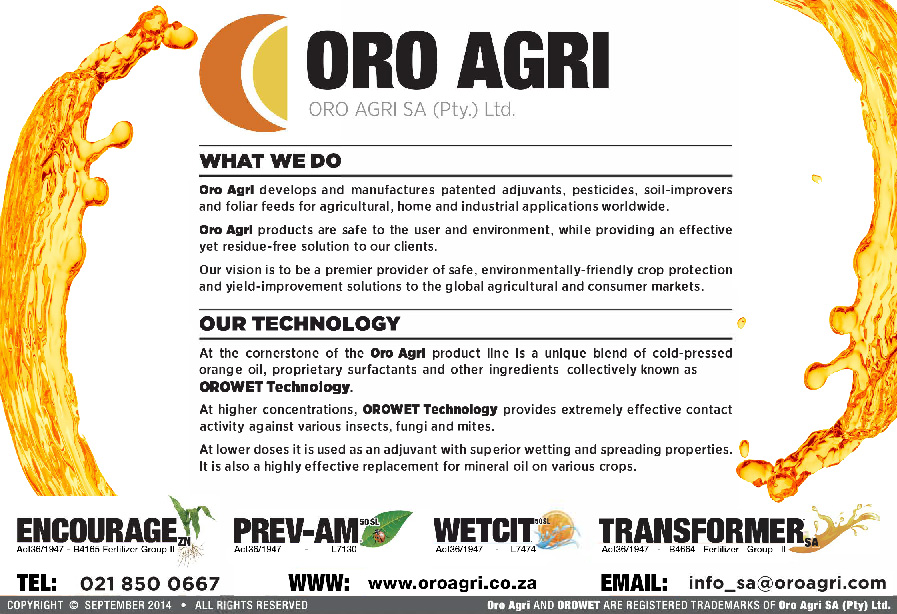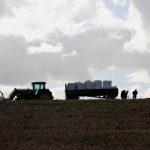
Introduction
Animal health includes the use of measures like vaccinations, dosing and dips to safeguard farming enterprises. These precautions amount to less than 7% of the farmer’s total expenditure. To avoid essential preventative treatment and spending is to act unwisely. Animal diseases and parasites are bad news for the economy, to say nothing of human and animal health.
All animal health products should be used strictly according to label instructions. Even then, results may vary according to the disease and the stage of the disease at which treatment is applied. The earlier that treatment is administered (during the course of the disease) the better will be the results.
No vaccine can give 100% protection, but the involvement of a veterinarian plus the correct use of registered products with demonstrated effectiveness and safety could only be to the benefit of animals and producers alike.
Contents
International business environment
View the following websites:
- HealthForAnimals https://healthforanimals.org
- www.woah.org – website of the World Organisation for Animal Health (OIE)
- Animal Health Europe www.animalhealtheurope.eu
- International Federation for Animal Health (IFAH) – www.ifahsec.org
- World Veterinary Association (WVA) – https://worldvet.org
- Global Alliance for Livestock Veterinary Medicines (GALVmed) – www.galvmed.org
- International Veterinary Information Service – www.ivis.org
For the newcomer
Vaccination
Vaccination is a process where you inject a biological product into an animal. It is a process whereby one exposes an animal to a codified or weakened disease-causing organism. The more antibodies the animal has to fight that particular disease, the less likely it is to become infected. In many cases, an animal should be vaccinated yearly to ensure immunity against specific diseases.
The age at which a young animal is first vaccinated plays an important role in its response to vaccination. This is because the young animal is still getting a measure of immunisation from the mother’s early milk or colostrum. This is passive immunity, but it interferes with the vaccine if given too early.
- Follow the correct route of application.
- The cold chain must never be broken (transport to and storage of the vaccine on the farm).
- Handling of vaccine is one of the major problems of vaccination failure. You have to keep your vaccines at a temperature of 4-8ºC, make sure that you have your sterile needles; you have your sterile cylinders, to avoid transmitting diseases from one animal to another.
- The effectiveness of vaccines depends on the management of the specific farmer, so if a farmer has qualities of being a good manager and using sustained vaccination programmes those vaccines will be effective.
For further information please contact: OBP or Animal Health for Developing Farmers at ARC-OVR (see “Role players” heading).
Parasites and resistance
Forty percent of all animal health products sold in SA are parasiticides, ectoparasiticides or dips and pour-on’s for control of ticks and other external parasites, as well as anthelmintics for control of worms. Because they are so important to SA farmers, there is much debate about parasites developing resistance to the chemicals in these products. The truth is that resistance will always be with us. It is nature’s evolutionary response towards evading suppression. To manage resistance:
- Never introduce new (and resistant) parasites onto your property. Always ensure that introduced animals are parasite-free before being released onto the farm by first quarantining and treating them with at least two different antelmintic groups and with one or more ectoparasitic control products (dips).
- Always follow the manufacturer’s instructions carefully when treating animals for parasites. Do not use an overstrength product.
- For the same reasons, never use home-made pour-on products to control ticks. The amount active ingredient needed depends on the formulation used, and there is no information on home-made formulations to make these critical decisions.
- Know the available remedies, which groups they belong to, and consult a vet, preferably from the supplier, to advise on when to change and what remedy to use next.
Disposal of redundant dip mixtures
Plunge dips need to be cleaned after a certain number of dip cycles. The remaining dip mixture is usually a concoction of active ingredients and their metabolites. The best practice to dispose of these dip mixtures is:
- Pump it into drums and have it disposed of by certified hazardous waste management service providers. Some of these are EnviroServ, www.enviroserv.co.za; A-Thermal, https://athermal.co.za ; and Rapid Spill Response, https://rapidspillresponse.com.
- Dip mixtures can also be pumped into a plastic lined evaporation pond that is fenced off and cover with netting to keep any animals out. Once the liquid has evaporated the sludge must be collected in plastic drums and disposed of by certified hazardous waste management service providers as mentioned above.
Do not attempt to dispose of any redundant dip mixture or dip residues by pumping it into natural water bodies or onto the soil. The results will be disastrous for the environment.
Sources: Afrivet, SAAHA, ARC-OVR, Department of Agriculture, AgriTV, Gerhard H Verdoorn.
National strategy and government contact
Find the “Public Info” option at www.savc.org.za. Included here is a copy of the Veterinary And Para-Veterinary Professions Act No. 19 of 1982.
To improve delivery of veterinarian services, Department of Agriculture, Land Reform and Rural Development (DALRRD) has introduced measures like expanding the existing bursary scheme for veterinary studies and introducing a year’s compulsory community service (CCS) for vets after graduating.
Find Directorate documents, contact details and other information at www.dalrrd.gov.za. Of relevance to this chapter are (i) Animal Health (ii) Veterinary Public Health, and (iii) Agriculture Inputs Control.
State Veterinary Services sponsor the testing for certain animal diseases. Please contact your nearest State veterinarian office or Provincial office for advice (find extensive details of chief director, state vets, laboratory services per province on the website). See also:
- The detailed list of Government Veterinary Laboratories in SA at www.dalrrd.gov.za (on the “Old website” take the “Branches”, “Animal Health” and “Epidemiology” options).
- The “Provinces” option at http://nahf.co.za, website of the National Animal Health Forum,
- The “Find a SAVA vet” option under “Public resources” at www.sava.co.za.
Role players
Further reference:
Training and research
- If you are a farmer, consider undergoing some form of Primary Animal Health Care (PAHC) training. It will certainly benefit your farming operation.
- ARC-Onderstepoort Veterinary Research (ARC-OVR) www.arc.agric.za OVR is part of the Livestock and Animal Health Division. Research activities at the OVR focus on the development of vaccines and diagnostic methodologies, applying the latest molecular biological techniques to prevent and control economically important diseases. The Institute promotes animal health and welfare by providing effective and diagnostic service, and vaccines against Foot-and-mouth and tick-borne diseases. The OVR is a collaborating centre for both the OIE (surveillance and control of animal diseases in Africa) and FAO (emergency preparedness for transboundary animal diseases for Africa, Helminth anthelmintic resistance and biological control for Africa, and the FAO Reference Laboratory for Arthropod transmitted viral diseases for Eastern and Southern Africa which includes seven reference laboratories for economically important viral diseases). Short training courses at ARC-OVR include tick identification and zoonotic disease.
- Companies involved support and do research on various aspects of animal health, both individually, at their own research facilities, and also collectively on aspects of importance to the farming community such as: tick resistance to ectoparasiticides worm resistance to endoparsiticides microbial resistance to antibiotics environmental issues such as dung beetle-and oxpecker compatible remedies.
- Health & Welfare Sector Education and Training Authority (HWSETA) – Agriculture and its related outputs are very dependent on veterinary science. See www.hwseta.org.za.
- Find the full list of universities and agricultural colleges on the “Agricultural Education & Training” page.
- Included in the South African Qualifications Authority (SAQA)-accredited qualifications are ones like “Observe and inspect animal health” and “Explain the prevention and treatment of animal diseases”.
Websites and publications
Several publications like A Guide to Animal Diseases in South Africa: Game, The Cattle Health Handbook (Heather Smith Thomas), Ask the Vet – What cattle farmers should know (Faffa Malan), Illustrated guide to identification of African tick species (Latif, A.A.) and Vaccines and Immunisation of Farm Animals (Du Preez, Malan) are available from Kejafa Knowledge Works. Find these at www.kejafa.com.
The Best practice reference manual for wool sheep farming in South Africa, brought out by the National Wool Growers Association (NWGA) includes useful notes on health and disease management. Find the document on www.nwga.co.za.
The ARC-OVR Supply Shop has a number of publications, CDs, DVDs and other media for sale.
The following publications (mostly “Info paks”) are available at www.dalrrd.gov.za:
- Abortions and causes of death in newborn sheep and goats
- Acaricide resistance
- Acaricide resistance (Xhosa)
- Anthrax
- Anthrax – frequently asked questions)
- Anthrax (Zulu)
- Are my chickens healthy?
- Are my pigs healthy?
- Asemhalingsiektes by hoenders (Afrikaans)
- Avian influenza (‘bird flu’)
- Avian influenza (‘bird flu’) (Zulu)
- Avian influenza (‘bird flu’) (Swati)
- Botulism
- Brucellosis
- Brucellosis and tuberculosis
- Campylobacteriosis
- Cattle (bovine) tuberculosis
- Clostridial diseases
- Clostridial diseases (AJ Olivier)
- Crimean-Congo haemorrhagic fever
- Common and important diseases of cattle
- Common diseases of small pig herds
- Common and important diseases of sheep and goats
- Community medicine stores
- Condition scoring of cattle
- Congo fever
- Crimean-Congo haemorrhagic fever
- Diarrhoea in cattle
- Diarrhoea in sheep and goats
- Die verskil tussen tussen inenting en behandeling
- Disease prevention in chickens
- Disease prevention in chickens (Afrikaans)
- Diseases shared by wildlife and livestock
- Dose your animals
- Dringende inenting van diere
- External parasites of cattle
- External parasites of chickens
- Feather, skin and leg conditions in chickens
- Feather, skin and leg conditions in chickens (Afrikaans)
- Foot and Mouth Disease (also available in Tsonga and Venda)
- Foot-and-mouth disease
- Foot-and-mouth disease (description)
- Foot-and-mouth disease: consumer concerns
- Frequency of tick control in cattle
- Giving an injection
- Goats vaccination programme
- Hints for dipping sheep
- Hondsdolheid ‘n dodelike siekte
- Horsesickness
- How medicine should be used
- Important facts you should know about FMD (also available in Tsonga and Venda)
- Internal parasites
- Johne’s disease
- Livestock: the effect of ticks on animals
- Lumpy-skin disease
- Lungsickness (Contagious bovine pleuropneumonia)
- Mad Cow Disease
- Methods of tick control in cattle
- Miltsiekte (Afrikaans)
- My cow is unable to stand up!
- Nervous conditions in chickens
- Newcastle disease
- Parasitic cysts and lesions in organs
- Parasitic cysts and lesions in meat
- Parasitic skin diseases of dogs
- Parasitic skin diseases of dogs (Zulu)
- Parasitic skin diseases of dogs (Tswana)
- Poultry diseases
- Prevent disease in goats and sheep (Turton)
- Rabies – a killer disease
- Rabies (the law says)
- Rabies (English-Tswana)
- Rabies (English-Xhosa)
- Rabies (English-Zulu)
- Rabies Guide for the medical, veterinary and allied professions
- Respiratory diseases in chickens
- Respiratory diseases in goats and sheep (Mashishi)
- Senuweetoestande by kuikens (Afrikaans)
- Tapeworm (Xhosa)
- The difference between vaccination and treatment
- The difference between vaccine, antibiotics and antiparasiticides
- The effects of ticks on animals
- Theileriosis
- Tick-borne diseases in ruminants
- Udder and teat lesions
ANIPEDIA is “an online quality and invaluable scientific animal health knowledge”. Visit www.anipedia.org.
Landbou.com, the electronic arm of the magazine Landbouweekblad, runs a question and answer veterinary column. Find it at www.landbou.com/landbou/kundiges
Diseases and Parasites of Sheep and Goats in South Africa (Dr Pamela Oberem, Dr Peter Oberem and Dr Johan van Rensburg) provides easy-to-understand information on management, disease recognition, preventative measures and treatment. Call Afrivet at 012 817 9060. Also available are the following:
- Diseases and Parasites of Cattle, Sheep and Goats.
- A guide to animal diseases in South Africa: Horses, Donkeys and Mules.
- A guide to animal diseases in South Africa: Dogs and Cats.
- Vaccination for the control of animal diseases in Southern Africa.
- A guide to animal diseases in South Africa: Game.
- Ticks and Tick-borne Diseases: Monograph 1. Ixodid ticks of major economic importance and their distribution in South Africa
- Ticks and Tick-borne Diseases: monograph 2. Illustrated guide to identification of African tick species.
- Ticks and Tick-borne Diseases: monograph 3. Tick-borne diseases in Southern Africa
- Ticks and Tick-borne Diseases: monograph 4. Control of ticks and tick-borne diseases in Southern Africa
See also the Afrivet Plan A website, www.afrivetplana.co.za, for an interactive calendar, easy-to-use wheel programme – and more.
The Journal of the South African Veterinary Association (JSAVA) is published by the South African Veterinary Association and AOSIS OpenJournals. Visit www.jsava.co.za.
Publications available from SAAHA on request (Contact details under previous heading):
- Guidelines for the Responsible Use of Crop Protection and Animal Health Products (Also in Afrikaans)
- Basic Guidelines for the Responsible Use of Crop Protection and Animal Health Products. English and Afrikaans – ideal for farmers.
- Guide to the Treatment of Poisoning by Chemicals – a must for the medical profession.
Using Efficient Microbes products decreases the farmer’s dependence on antibiotics and medicines. Read more at www.efficientmicrobes.co.za.
www.vetproductsonline.co.za – an online animal product store.
Some articles
- Botha L. 2020, May 10. “An animal health plan for the year from Dr Faffa Malan”. Farmer’s Weekly. Available at www.farmersweekly.co.za/farm-basics/how-to-livestock/an-animal-health-plan-for-the-year-from-dr-faffa-malan/
- Devlin, H. 2018, March 17. “Scientists on brink of overcoming livestock diseases through gene editing”. The Guardian. Available at www.theguardian.com/science/2018/mar/17/scientists-on-brink-of-overcoming-livestock-diseases-through-gene-editing
- Dr Faffa Malan discusses (in Afrikaans) animal health issues in feedlots. Watch it at www.youtube.com/watch?v=pliIw-ItUQo



Share this article








